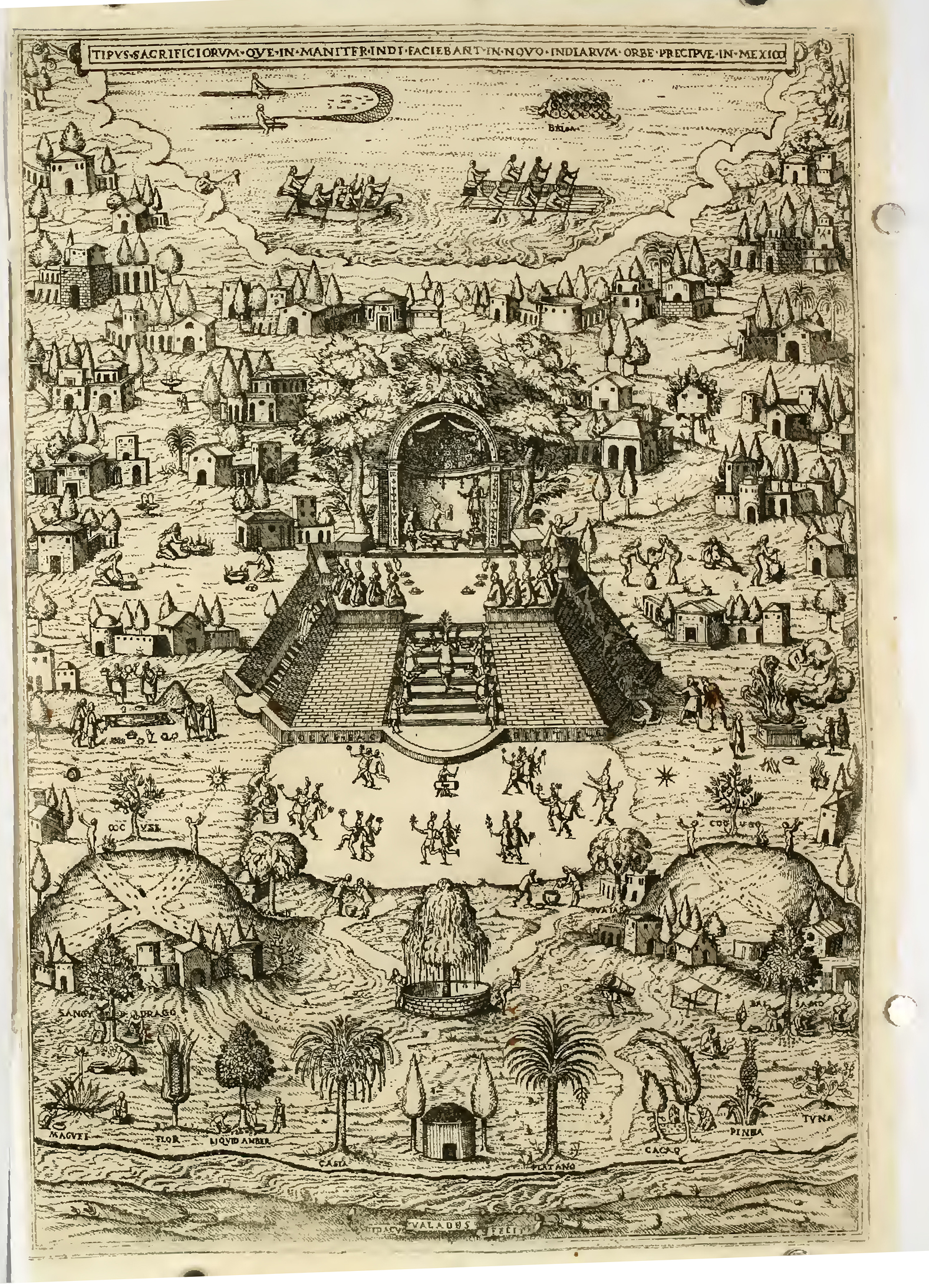Valadés, in Rhetorica christiana included a striking image of Tenochtitlan as a mnemonic device of all the sacred objects in the Aztec urban landscape. The plate included not only the Templo Mayor or central pyramid of Tenochtitlan but also waterworks (fountains, dikes, aqueducts, pisciculture) and materia medica (cocoa, dragon’s blood, guava, balsam, maguey, tuna, acacia and ahuehuete).
Mexican Mnemonic Landscape as History
Jorge Cañizares-Esguerra
Further reading
- Carruthers, M. (1990) The Book of Memory (New York, NY: Cambridge University Press).
- de la Maza, F. (1945) Fray Diego Valadés: escritor y grabador franciscano del siglo XVI (Mexico City: UNAM Instituto de Investigaciones Estéticas).
- Palomera, E.J. (1988) Fray Diego Valadés, OFM, evangelizador humanista de la Nueva España: el hombre, su época y su obra (Mexico City: Universidad Iberoamericana).
- Spence, J.D. (1984) The Memory Palace of Matteo Ricci (New York, NY: Viking Penguin).
- Yates, F.A. (1966) The Art of Memory (Chicago, IL: University of Chicago Press).





